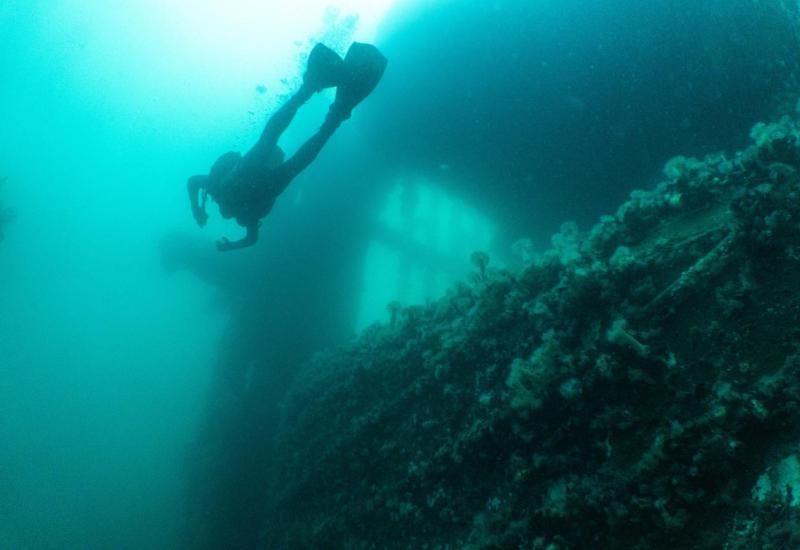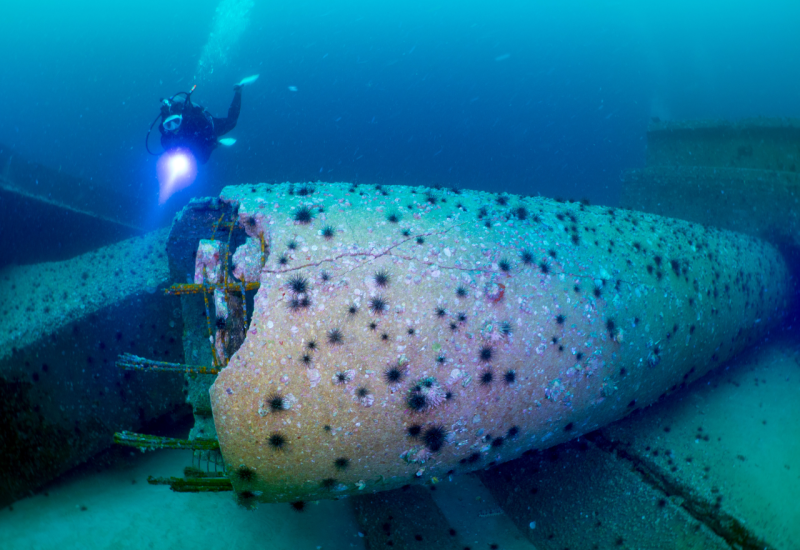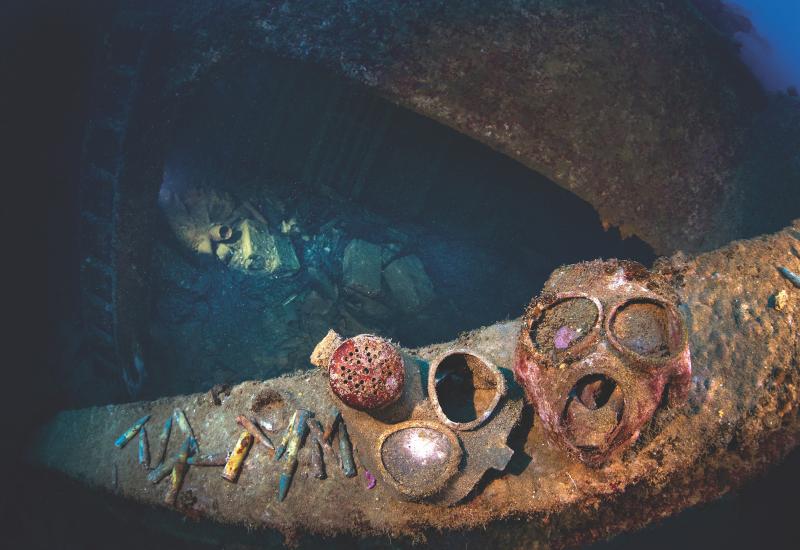What It’s Like to Dive the Titanic
You look out, having spent two-and-a-half hours dropping down through the water column. And you've seen all the movies. You've seen all the pictures. You've seen the books, you've read the stories, you've heard other people's experiences. But nothing really prepares you for seeing something with your own eyes.

Rory GoldenThe bow of the Titanic looms out of the darkness.
We landed in our drop zone away from the ship, slowly moved off in the direction of the ship and after about 10 minutes, we gently bumped into a mud bank. The sea floor at this stage has been quite level with ripples in the sand. And as we got nearer and nearer the wreck site you could see bits of wreckage or small items on the seabed. And you know you're getting nearer and nearer to it. But as we approach the mud bank, the pilot had slowed down and gently bumped into it. He then started to rise because, at this stage, the mud banks where the ship — the bow — plunged into the seabed. It literally buried itself 60 feet below the surface of the seabed. And so the pilot just started to make the sub rise slowly in front of us.
This wall of steel rivets appeared in front of me and the tingling started in my back because now you realize you are actually there. You are actually seeing with your own eyes through a viewing port, not through a camera, not through a TV screen, you with your own eyes are seeing this monumental site of the world's then-greatest maritime disaster. The world's most recognized disaster globally. Your disbelief becomes belief as you rise up through this wall of steel, seeing portholes, and then appearing all over the promenade deck area, looking down on the bow section, looking down on the bridge area where the captain had stood.
You have become a member of a club, but only a few 100 people have had that great experience to see and it’s a roller coaster ride of emotions; you go through excitement, and you go through sadness, because you think of the people who lost their lives. You think of the great tragedy of a ship on its maiden voyage that never made it across the Atlantic, bringing people from Ireland, from further afield, seeking a new life in America. And all those emotions go through your head. And the feelings that you have is just a great mix of every feeling you could think of.
On that particular first trip we were tasked to see if we could find the plaque that had the yard number 401, which was Titanic’s yard number, which had been put on an oval plaque on one of the bulkheads below the bridge area. The base of that plaque had been recovered on a previous dive, which was a timber mount. So we spent, literally, the next two hours in the one area sifting through piles of debris looking for this brass plaque.
But that particular day, there were no currents out there. The currents can vary quite tremendously down there, and it was very still that day. So every time the robotic arm went into the pile of debris it stirred up so much silt and it took 15 to 20 minutes, maybe half an hour, before it cleared and we could actually see what we're looking at. So we spent the two hours there and didn't find anything. We reckoned that the robotic arm wasn't long enough to go into another section of that pile. So we failed miserably in that particular task, but spent the rest of the next few hours going around the wreck site picking up a few things: a telegraph stand, a bulkhead lamp, and a few other smaller items like that. But all the while I was just soaking in the whole presence of the wreck and seeing the great decay, but, again, imagining what it was like when it was brand new.

Courtesy Rory GoldenRory Golden stands with his discovery, the wheel of the Titanic, after it was recovered.
We took two and a half hours to get down there. We spent seven hours on the seabed. So that's over nine and a half hours you’re in the sub. The time came to leave. We did one last swoop around the wreck area, and that's when I spotted another shape sticking out. And we went to investigate further and realized that this was the remains of the main ship's wheel. This is the wheel that the Quartermaster hichens had so that when he was given the command to turn the ship away from the iceberg. It incredibly had been ripped from the telemotor, which was the hydraulic pump that you see, that's all the stuff on the bridge of the Titanic. And that had somehow been ripped off in the sinking. And instead of landing away from the wreck and the debris field ended up on the officer's deck about 15 meters away from where it originally came from. And in spite of so many other expeditions over the previous years, nobody else has seen this. It was quite a surprise to find something like this and quite a significant historical piece to recover.
Correction: The original version of this article stated the wheel had been ripped from the tandy motor. It has been corrected to read telemotor.
Golden is revisiting the Titanic this summer as an expert with OceanGate Expeditions, which is taking dozens of paying Mission Specialists on expeditions to the wreck to help document its status.










